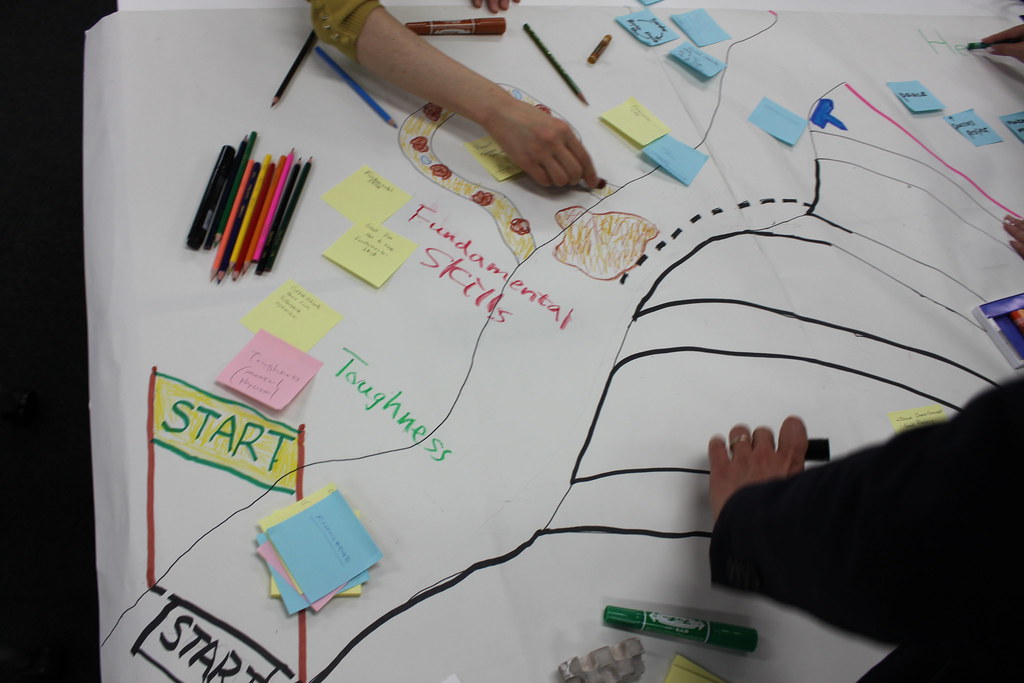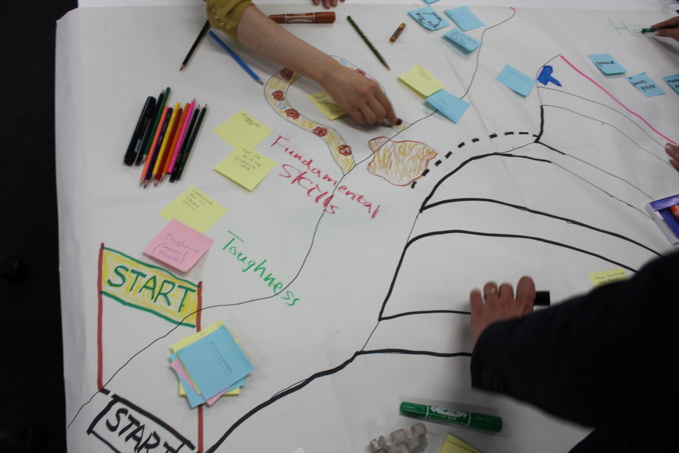1. Take your tasks easy
The easier you perceive your tasks, the more efficient and focused your work is. Such a view will help find more examples and lessons from history and modern industries, borrow them, find similarities or differences. This is similar to the Japanese concept of Shoshin, which means “novice consciousness,” or open mind, an important part of many martial arts. An inquiring and open mind makes growth possible and requires a lot of practice. Cognition of the new requires going beyond the narrow framework of a “safe” perception of one’s work.
2. Learn from mistakes of others
Details of the failures may vary depending on the project, but the main reasons or erroneous actions of others can be applied to your case, too. See defeat as an opportunity to learn something. What factors caused the failure? Which of them can be minimized or completely eliminated? The knowledge that we draw from failures is the richest source of progress, if we have the courage to analyze what happened.
3. Be a leader
Management requires leadership, and leadership requires managerial skills. Anyone who manages projects is required to fulfill both roles, regardless of what the job description says. Stress in this case is an integral part of the job. Therefore, many managers shy away from leadership functions (for example, when a team or project needs a person who takes decisive action) and prefer to monitor the team’s work, instead of motivating it or even participating in the work. If a person only controls and watches from the side, perhaps he is more suitable for work in accounting. Ineffective managers tend to crawl in shadows of their projects, where they bring almost no value.
4. Plan it
Even simple projects benefit greatly from planning. It provides an opportunity to analyze decisions, identify unreasonable assumptions and seek agreement between individuals and organizations.
Project planning involves finding the answer to two questions. The first of the questions, “What do we need to do?” is usually called collection of requirements. The second question, “How do we do this?”, is called design and specifications. Requirements are detailed descriptions of performance criteria. The final result should immediately show whether they are met or not. A specification is a product creation plan that meets all requirements.
5. Do not confuse process and goals
Some project managers are beginning to count what absolutely no need to count. Not imagining what else to do, or fearing to do the necessary, they spend time on secondary tasks. And as the gap between the project manager and the project grows, the amount of unnecessary attention paid to charts, tables, checklists and reports also grows. Probably, at some point, the manager begins to think that the data and the process are the essence of the project.
To minimize confusion, competent managers do not divide work into pleasant and unpleasant. They draw no boundaries between tasks of project management and the project itself. A tight attachment to the checklist requires a certain process that guarantees a certain result, and it never happens. In reality, there are three things: a task, a lot of work, and a group of people. Well-defined roles help organize work, but role formation is not an end in itself. The checklist helps you get the job done and reach the goal, but it is not the goal either. Confusing processes with tasks is one of the most serious mistakes. Instead of focusing on processes and methods, a project manager should focus on the team.
Based on "Making Things Happen. Mastering Project Management" by Scott Berkun
The easier you perceive your tasks, the more efficient and focused your work is. Such a view will help find more examples and lessons from history and modern industries, borrow them, find similarities or differences. This is similar to the Japanese concept of Shoshin, which means “novice consciousness,” or open mind, an important part of many martial arts. An inquiring and open mind makes growth possible and requires a lot of practice. Cognition of the new requires going beyond the narrow framework of a “safe” perception of one’s work.
2. Learn from mistakes of others
Details of the failures may vary depending on the project, but the main reasons or erroneous actions of others can be applied to your case, too. See defeat as an opportunity to learn something. What factors caused the failure? Which of them can be minimized or completely eliminated? The knowledge that we draw from failures is the richest source of progress, if we have the courage to analyze what happened.
3. Be a leader
Management requires leadership, and leadership requires managerial skills. Anyone who manages projects is required to fulfill both roles, regardless of what the job description says. Stress in this case is an integral part of the job. Therefore, many managers shy away from leadership functions (for example, when a team or project needs a person who takes decisive action) and prefer to monitor the team’s work, instead of motivating it or even participating in the work. If a person only controls and watches from the side, perhaps he is more suitable for work in accounting. Ineffective managers tend to crawl in shadows of their projects, where they bring almost no value.
4. Plan it
Even simple projects benefit greatly from planning. It provides an opportunity to analyze decisions, identify unreasonable assumptions and seek agreement between individuals and organizations.
Project planning involves finding the answer to two questions. The first of the questions, “What do we need to do?” is usually called collection of requirements. The second question, “How do we do this?”, is called design and specifications. Requirements are detailed descriptions of performance criteria. The final result should immediately show whether they are met or not. A specification is a product creation plan that meets all requirements.
5. Do not confuse process and goals
Some project managers are beginning to count what absolutely no need to count. Not imagining what else to do, or fearing to do the necessary, they spend time on secondary tasks. And as the gap between the project manager and the project grows, the amount of unnecessary attention paid to charts, tables, checklists and reports also grows. Probably, at some point, the manager begins to think that the data and the process are the essence of the project.
To minimize confusion, competent managers do not divide work into pleasant and unpleasant. They draw no boundaries between tasks of project management and the project itself. A tight attachment to the checklist requires a certain process that guarantees a certain result, and it never happens. In reality, there are three things: a task, a lot of work, and a group of people. Well-defined roles help organize work, but role formation is not an end in itself. The checklist helps you get the job done and reach the goal, but it is not the goal either. Confusing processes with tasks is one of the most serious mistakes. Instead of focusing on processes and methods, a project manager should focus on the team.
Based on "Making Things Happen. Mastering Project Management" by Scott Berkun



















